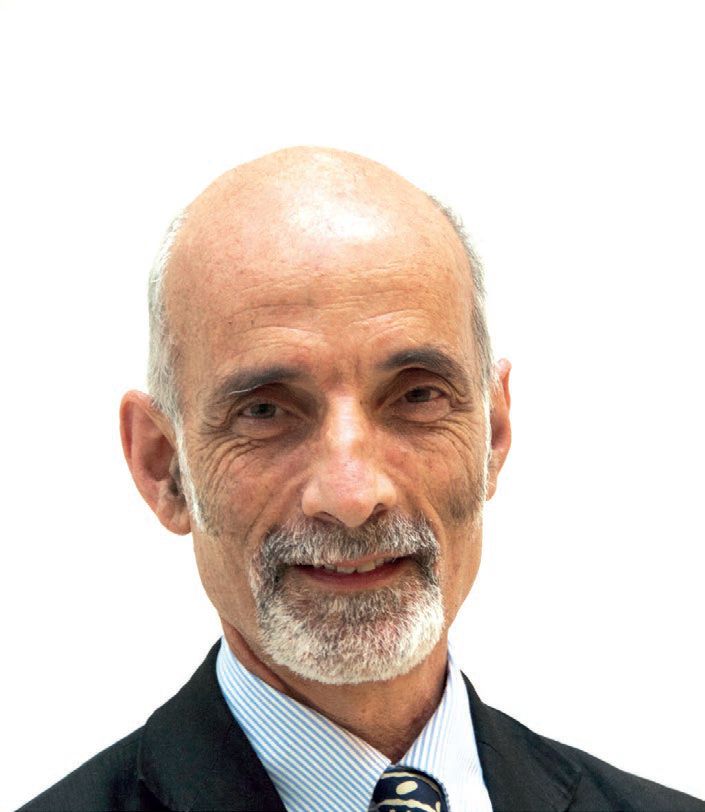
Physiology News Magazine
Editorial
The original Society was primarily a male, medical (albeit liberal) grouping – we have come a very long way towards the inclusive participation of everyone who calls themselves a physiologist.
News and Views
Editorial
The original Society was primarily a male, medical (albeit liberal) grouping – we have come a very long way towards the inclusive participation of everyone who calls themselves a physiologist.
News and Views
Jonathan Ashmore
https://doi.org/10.36866/pn.88.5

On 26 May 1876, the opening declaration of a newly formed society stated, confidently, as its Clause 1: ‘This Society is called “The Physiological Society”’. It is still there in the constitution. It is a testament to the strength of our organisation that we are still discussing the excitement and the desires of the science that created The Society. There have been changes in how we are organised. There have been, not surprisingly, momentous changes in the scope and volume of the science. There have been equally profound changes in membership and participation. The original Society was primarily a male, medical (albeit liberal) grouping – we have come a very long way towards the inclusive participation of everyone who calls themself a physiologist. Physiology has spun off disciplines which have sometimes grown even larger than their parent. But above all we are held together by a common passion to understand, at every level, the mechanisms and principles that constitute the startling functioning complexity of living entities.
So what are the priorities of The Society? To be blunt, the profile of physiology as a discipline has receded a little even during my career in science: physiology departments in the UK have been merged and lost individual identities; ‘-omics’ sciences have grown, often without the breadth of a ‘big picture’ of animal and human function, but always underpinned by physiology. We need to address that, particularly when the need for understanding how the many startling recent developments in biomedical science can be integrated for the good of all. In terms of a membership, The Society has remained relatively static, at least in the UK. We need to address that as well. There is huge potential for making collaborations in many spheres that underpin translational medicine, nationally and internationally, simply because The Society has held a strategic place in international science for well over a century; doors are opened by our position and we can and should use that.
The three current areas of The Society’s activities deserve special mention: our new premises, our new publication and our plans for IUPS 2013. Thanks to a group chaired for the past 18 months by Mike Spyer, we shall soon move into new permanent space in Farringdon, London EC1. It is the first time, I believe, that we have been in the position of not just leasing, but owning our accommodation. It will be a major asset, not just financial, but to bring the activities of The Society all under one roof. It will provide valuable lecture and meeting room space to develop what we offer.
Secondly, in collaboration with the American Physiological Society, we are just about to launch our new open-access journal, Physiological Reports. It is scheduled to launch at the beginning of 2013. The publication will have the muscle of Wiley- Blackwell, our publishers for The Journal of Physiology and Experimental Physiology, and it will have a major impact on the field.
Thirdly, after the extremely successful Physiology 2012 – the Edinburgh meeting which attracted over 1000 attendees – we are aiming high for IUPS 2013. The meeting will take place in Birmingham’s International Convention Centre and we are expecting an attendance of over 3500 people. IUPS 2013 is already shaping up to be really stimulating and nobody reading this can afford to miss it.
As incoming President I know that I stand on the shoulders of others. Mike Spyer has for the past two years been an outstandingly successful Society President, initiating many new projects. I have mentioned only a few here. As Deputy President, I saw how he managed a large number of difficult assignments with a steady hand. Above all, he has steered The Society into a position where, despite all the uncertainties that surround learned societies today, we are able to make the best use of our resources to the benefit of our membership in the UK and internationally. Richard Vaughan-Jones, stepping in as the new Deputy President, The Society’s team in the new ‘Hodgkin-Huxley House’, and everyone on the Executive Committee and Council will be making sure that the next period will be as exciting and as stimulating as it can possibly be.
Finally, I extend a warm welcome to the new members of Council. The Society elected six places on Council at the Annual General Meeting in Edinburgh. The Council is now 22 strong and we look forward to discussing – sometimes heatedly – the many topics that come up in the course of the year. The members of Council and I are there to respond to your concerns and to generate an exciting programme of meetings and activities which should touch everyone. This, after all, is your Society.
